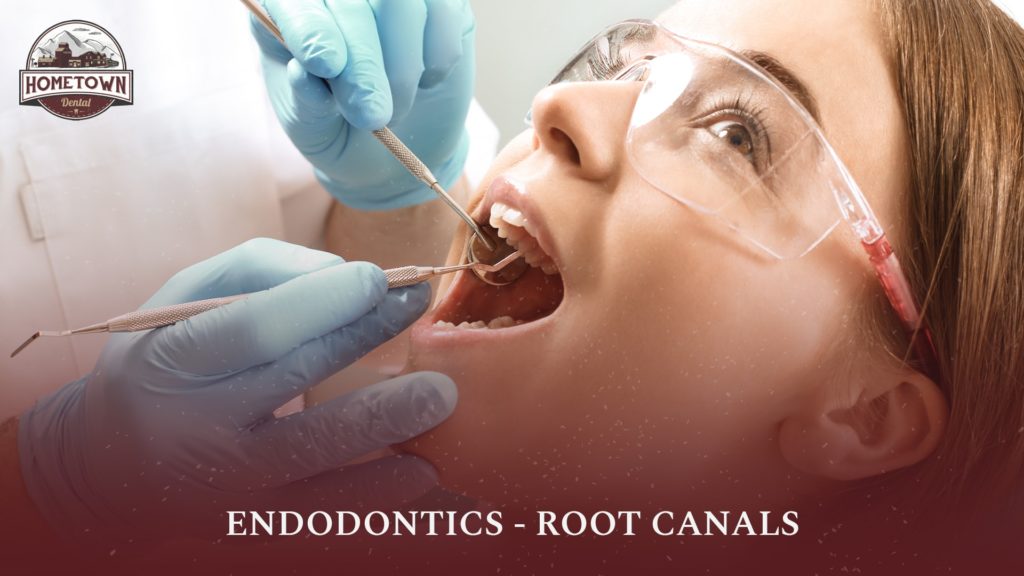Root canal treatment or endodontic therapy is the process of cleaning and disinfecting the pulp chambers and canals inside a tooth when there has been injury, infection or damage to the pulp (nerve and blood vessels).
This can result from deep decay that infects the pulp with bacteria or trauma that damages the tooth and pulp irreversibly. Sometimes the decay does not directly enter the pulp but if the restoration is very close to the nerve, this can cause irreversible damage and inflammation to the pulp. This situation also requires root canal treatment. If a tooth is abscessed and the infection is stemming from the pulp tissue, root canal treatment is needed to disinfect and cure the infection in order to save the tooth. If root canal therapy is not completed, the infection can become severe enough that the tooth would require extraction.
Endodontic treatment involves anesthetizing (numbing) the tooth and gums in the area and then placing a rubber dam for isolation of the tooth. This keeps it clean and dry during the procedure and also keeps the antibacterial irrigant from going into the mouth. Once the rubber dam is on, the next step is accessing (drilling) through the top of the tooth into the pulp chamber to locate the canals (there are more canals in the posterior teeth than the anterior teeth). Then small files are rotated down into the canals to the end of the root to remove the damaged and diseased pulp tissue. This also cleans and shapes the canals and allows a strong bactericidal irrigant to reach the end of the root to disinfect the root canal system. An ultrasonic file is placed in irrigant-filled canals and the high-frequency vibrations cause the irrigant to enter the small crevices within the root canal system to provide thorough disinfection. The files used an increase in size throughout the procedure to ensure the removal of any tooth structure that has been invaded by bacteria. There are files that use by hand and some that fit into a specialized drill. Once the canals have been cleaned to remove all infected tissue and shaped with the various files, they are dried and then filled up with a rubber material called gutta-percha to seal the system to prevent recurrent infection.
Once the root canal is completed, the tooth then needs to be restored. If there is a lot of tooth structure missing above the gums, sometimes a supporting post is placed in the tooth to help retain the restoration. The top of the tooth is restored with a filling and then ideally a crown is placed on the tooth to prevent fracture.
Tips for increasing root canal success rate:
- initiate root canal treatment sooner than later as bigger or worse infections are harder to heal as they have done more damage to the tooth and bone
- place the crown on the tooth as soon as possible to prevent fracture of the tooth
- avoid chewing hard food on the tooth until the crown is placed
- practice good oral hygiene as root canal teeth can still get cavities/decay (the only difference is there will be no pain associated)




